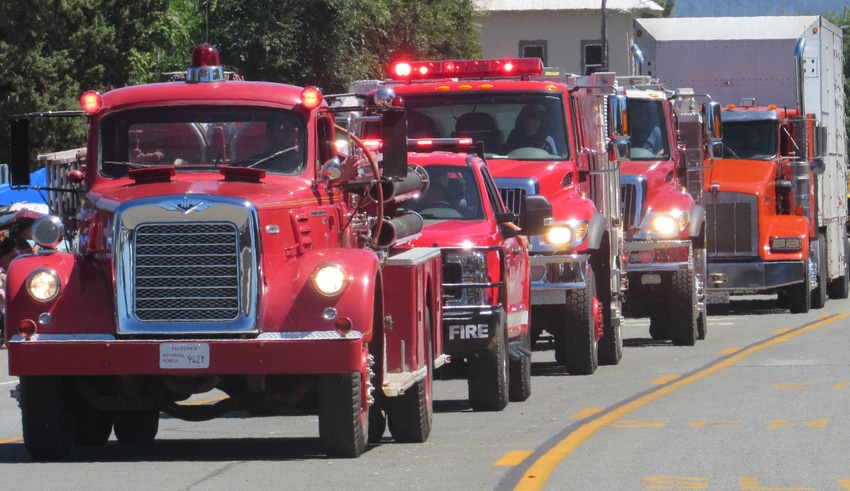August 26, 2020

The U.S. Department of Agriculture is offering help to producers affected by wildfires currently ravaging the West, as growers report damage to rangelands and impacts on the harvest of wine grapes.
As of Tuesday, wildfires had burned more than 2 million acres, mostly in the western states, the agency notes. Nearly 28,000 local, state and federal firefighters were responding to 157 separate incidents, 95 of which are large, uncontained fires.
“Right now, more than 6,000 firefighters from the USDA Forest Service are battling wildfires across the nation alongside our local, state and federal partners,” said Jim Hubbard, USDA Under Secretary for Natural Resources and Environment. “Our aggressive initial attack efforts have proven incredibly proficient in protecting the American people and our lands as crews continue to face unrelenting challenges such as high winds and dry lightning.”
In California, the fires are burning mostly timber, brush and grass, although thousands of residents in the greater San Francisco Bay Area have been ordered to evacuate. The fires have damaged and threatened crops and livestock throughout Northern and Central California, in some cases taking away a crucial food source for cattle grazing in uplands, reports the California Farm Bureau Federation.
The North Bay's wine country is again under threat after a series of devastating fires in the region in the last three years. In 2018, smoke from the Mendocino Complex Fires destroyed the market for an estimated $41 million in wine grapes grown in vineyards near burned areas.
“I think there’s a better chance than not that we make almost no wine this year,” Noah Dorrance of the Healdsburg-based Reeve Wines told the San Francisco Chronicle.
Evacuations could hinder harvesting, but the bigger danger may be posed by thick plumes of smoke generated by the fires, which have burned more than 1.4 million acres in the state, according to the Sacramento Bee.
USDA sets up disaster center
USDA partnered with the Federal Emergency Management Agency and other disaster-focused organizations and created the Disaster Resource Center. This center has a searchable knowledge base of disaster-related resources powered by agents with subject matter expertise. The Disaster Resource Center website and web tool now provide an easy access point to find USDA disaster information and assistance, agency officials say.
USDA also developed a disaster assistance discovery tool specifically targeted to rural and agricultural issues. The tool walks producers through five questions that generate personalized results identifying which USDA disaster assistance programs can help them recover from a natural disaster.
When major disasters strike, USDA has an emergency loan program that provides eligible farmers low-interest loans to help them recover from production and physical losses. USDA’s emergency loan program is triggered when a natural disaster is designated by the Secretary of Agriculture or a natural disaster or emergency is declared by the President under the Stafford Act. USDA also offers additional programs tailored to the needs of specific agricultural sectors to help producers weather the financial impacts of major disasters and rebuild their operations.
Helping producers weather financial impacts of disasters
Livestock owners and contract growers who experience above normal livestock deaths due to specific weather events, as well as to disease or animal attacks, may qualify for assistance under USDA’s Livestock Indemnity Program.
Livestock producers who have suffered grazing losses due to a qualifying drought condition or fire on federally-managed land during the normal grazing period for a county may qualify for help through USDA’s Livestock Forage Disaster Program. Producers of non-insurable crops who suffer crop losses, lower yields or are prevented from planting agricultural commodities may be eligible for assistance under USDA's Noninsured Crop Disaster Assistance Program if the losses were due to natural disasters.
Helping operations recover after disasters
USDA also can provide financial resources through its Environmental Quality Incentives Program to help with immediate needs and long-term support to help recover from natural disasters and conserve water resources. Assistance may also be available for emergency animal mortality disposal from natural disasters and other causes.
Farmers and ranchers needing to rehabilitate farmland damaged by natural disasters can apply for assistance through USDA’s Emergency Conservation Program. USDA also has assistance available for eligible private forest landowners who need to restore forestland damaged by natural disasters through the Emergency Forest Restoration Program.
USDA's Emergency Watershed Protection Program also can help relieve imminent threats to life and property caused by flood, fires and other natural disasters that impair a watershed.
Orchardists and nursery tree growers may be eligible for assistance through USDA’s Tree Assistance Program to help replant or rehabilitate eligible trees, bushes, and vines damaged by natural disasters. Visit USDA's disaster resources website to learn more about USDA disaster preparedness and response.
For more information on USDA disaster assistance programs, contact your local USDA Service Center. To find it, go to farmers.gov/service-center-locator.
About the Author(s)
You May Also Like




